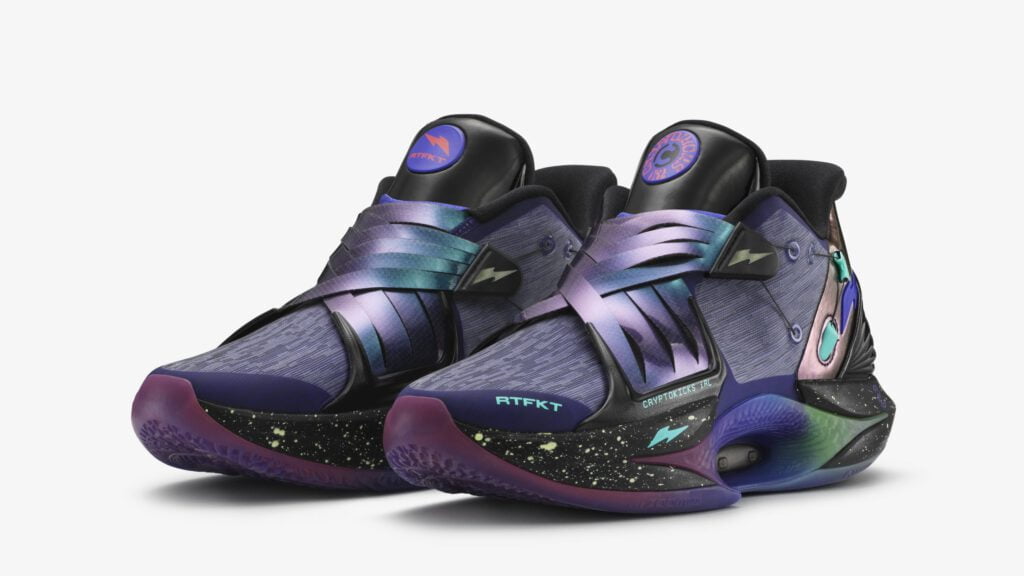Art Basel 2022 was a Web3 Playground, and it only furthered what we all know to be true – brands are clamoring to figure out their approach to Web3 and NFTs. We got a little teaser into what’s to come from brands regarding the Metaverse, Web3, and NFT/customer loyalty initiatives in the new year.
The activities going on during this show and what we’re hearing/seeing from major brands shows, while it’s still early days, creating a digital world of valuable products and services is upon us. It got us interested in breaking down what is happening.
But FTX and collapsing valuation mean the end…
Some are arguing that with the recent fallout over FTX and collapse of the crypto values, the nascent digital asset economy is going to flame out, as these public issues scare consumers and perhaps brands away from even trying to build a valuable digital world where quality products, services, and customer engagement can live.
We know this isn’t the end but rather the beginning of a new approach to this online marketplace and a way to reinvent customer engagement, loyalty, and actions. Some brands are setting a tone that will have airlines reimagining frequent flier miles. Others will offer such gamified exclusive engagements that even the most avid NFT investors are stumped.
For those of you consumers, and perhaps brands that feel a little left behind or confused by the whole thing, I’ve broken down a few brands that are offering different flavors of the experience to understand what’s truly possible and what is being categorized in this world even if it’s more Web 2.5 then full Web 3.
1. Starbucks – massive scale, but is it Web3?
Starbucks is an excellent example of a company that has a massive reach and is trying to ease its customers into an experience that will ultimately lead to a Web3 platform that allows them to broaden how they offer NFT and various engagements. The new Starbucks Odyssey Market is a Web3, NFT-based extension of the existing Starbucks Loyalty Program.
As part of this new initiative, members can participate in interactive challenges known as “Journeys.” These digital adventures range from visiting a virtual coffee farm to playing Starbucks trivia to ‘collectible’ mini experiences where members can earn ‘Journey Stamps’ (NFTs) and Odyssey Points on the Polygon network.

With over half of Starbucks’ yearly revenue coming from Rewards members ($14.5BN), the upcoming Web3 integration in their rewards program can be an impactful gauge for consumer adoption, engagement, and conversion as accrued points can be redeemed for Starbucks merchandise and journeys.
Starbucks is a prime example of how a major brand can onboard millions of its customers to the blockchain and avoid the common NFT stereotypes and aversions clients may hold. Offering a centralized custodial wallet and paying with credit cards may be at odds with the ethos of Web3, hence why I consider this a Web2.5 activation. That being said, the power of the blockchain and the non-fungibility of these assets can transform how value is communicated between brand and client.
2. Rebecca Minkoff – Educating fans and making them part of the design team
Mavion, the NFT brand behind Rebecca Minkoff’s handbag collection, bridges the gap between designer and customer. Minkoff launched her first collection of 55 “Unlockables” in July 2022, NFTs that provide holders with exclusive digital and physical experiences. Five lucky holders received a limited-edition bag, a handmade accessory by one of Mavion’s designers, two tickets to Minkoff’s fashion week show, and other impressive perks.
Minkoff’s more recent October launch featured 3,000 NFTs showcasing artistic renderings of her bags. Users were encouraged to mint multiple NFTs, revealing that a ‘match’ of two corresponding NFTs (attached #2) meant you would unlock a physical Rebecca Minkoff bag and a seat at the virtual design table with Minkoff and her team as they finalize the bag’s design.
After Minkoff and Mavion’s first drop, they discovered customers could use an educational boost in onboarding into the Web3 space. Mavion onboarded over 2,000 people in March for free by guiding how to set up a crypto wallet. Recently the brand released a series of educational Zoom sessions to broaden customer engagement and conversions through Web3 comfort.
Rebecca Minkoff and Mavion are great examples of two fashion houses coming together to empower each other – a platform created to equip designers with digital business tools and an established designer looking to expand into new online territories.
3. Nike/RTFKT – the innovators and dreamers who made it too confusing
One of the few rising stars of Web3 that has stayed both relevant and profitable has been RTFKT, a virtual fashion and collectible company that Nike acquired in December of 2021. However, even after creating and sustaining hype through a crypto winter, their first real collaboration with Nike to create an in-real-life (IRL) sneaker from a series of digital NFTs turned into a flop with massive blowback from their community.
The mysterious ‘what’s-in-the-box’ Nike NFTs like the MNLTH2 that they were selling, promoting, and airdropping (gifting to previous holders) were revealed to be nothing, but virtual shoelaces were needed to ‘forge’ these into IRL sneakers. Oh, they also gave users a $100 discount on the sneakers.

$100 off may sound good, but before the MNLTH2 revealed its contents, these mysterious NFT boxes were getting offers close to 10ETH on platforms like OpenSea, the #1 NFT marketplace. Thousands of owners, hoping there was something precious inside Nike’s first real NFT collection, chose to forgo profits of over $20,000 to hold onto a box that revealed itself as shoelaces and a discount code.
Then, RTKFT announced that the sneakers would only ship to the US. With two-thirds of Nike’s revenue coming from outside the US, and Web3 being known as an international audience across all time zones, this was metaverse mortal wound that resulted in only 31% of the 19,000 sneakers being purchased between the private and public drop. Before this, almost every single RTFKT drop sold out instantly.
In conclusion, despite some of the rocky roads we’ve traveled recently in the crypto and Web3 world, we don’t see a slowdown in the adoption by major brands. We don’t anticipate a slowdown at all, especially when we see fashion houses, artists, celebrities, and more getting on the NFT bandwagon.
About the author
Matt Maher is a Futurist, Speaker, and Founder of M7 Innovations. He has guided executive teams at Fortune 100 companies through the ever-changing media and technological landscapes—conceptualizing, presenting, and executing innovative solutions.
Matt sits on the international advisory boards of CHANEL and the Glimpse Group (NASDAQ: VRAR), and his thought leadership, as well as award-winning work, has been featured in Forbes, Quartz, Men’s Journal, Retail Touchpoints, and Adweek.
He specializes in augmented and virtual realities, web3, the metaverse, artificial intelligence, the internet of things (IoT), and voice technology. He formerly served as VP of Innovation at Assembly, AdAge’s 2018 Agency of the Year, and Director of Content at Interpublic Group’s Initiative. Follow Matt on Twitter, connect with him on LinkedIn, and check out his weekly M7 Innovation Brief, covering three hot topics in 90 seconds.




